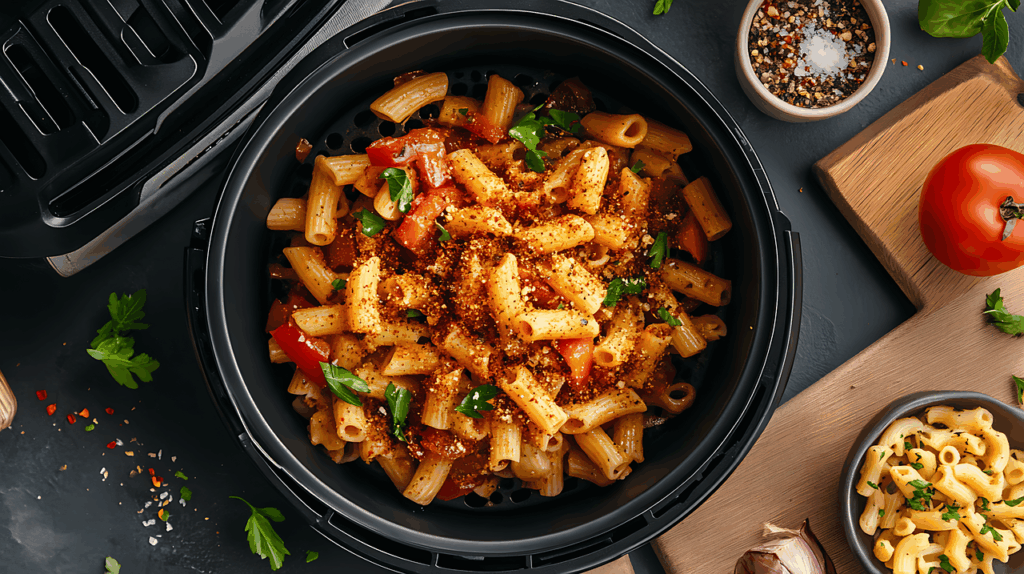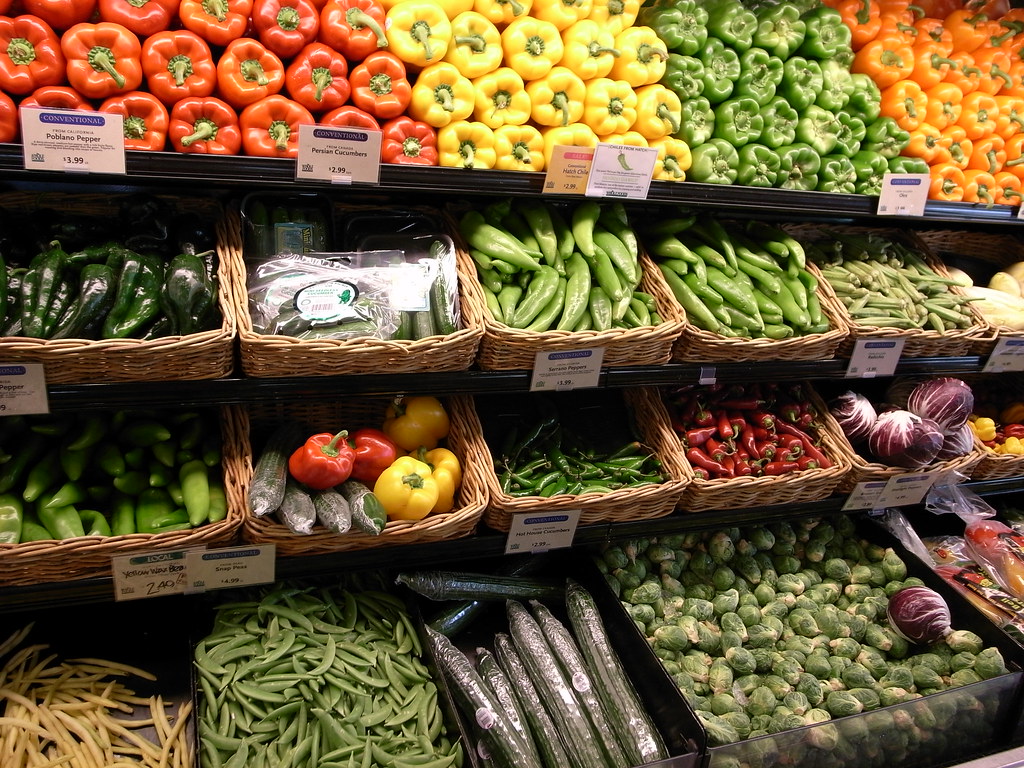
Think your veggie game is strong? Think again! While common vegetables like broccoli, spinach, and carrots often hog the spotlight and become our go-to choices, there’s an entire world of under-the-radar vegetables quietly bursting with incredible flavor, essential nutrients, and exciting culinary potential just waiting to be discovered. If your family relies on the same few kinds, you might be missing out on some truly awesome options flying under your radar.
In everyday conversations, you might hear someone say a movie, musician, athlete, or even a piece of art is “underrated.” This powerful phrase often pops up in discussions about talent, achievements, or popularity. When a person, work, or entity is considered underrated, it suggests that their abilities, qualities, or contributions are greater than what the general consensus or public acknowledgment reflects. It essentially points to a significant gap between perceived value and actual value, and it’s a concept that absolutely applies to our produce aisles too!
These unsung heroes might not win beauty contests or be the first to catch your eye in the produce aisle, but they more than make up for it with their versatility and unique taste profiles. We’re embarking on a delicious journey to give the floor to some of these amazing vegetables that deserve way more love. Get ready to shake up your veggie routine and discover new favorites that will boost your health and add undeniable excitement to your meals.

1. **Kohlrabi**
Often overlooked in the vegetable aisle, kohlrabi is a truly bulbous delight with a crisp texture that reminds many of a fresh radish. This quirky vegetable stands out with its unusual appearance, almost like a turnip growing above ground, and it offers an incredible versatility in the kitchen, ready to be enjoyed either raw or cooked to perfection. Don’t let its unique look intimidate you; beneath that somewhat tough outer layer lies a tender, juicy inside eager to be explored.
To prepare kohlrabi, begin by peeling away its firm outer skin, revealing that wonderfully tender and succulent interior. Once peeled, you can easily slice it into sticks, transforming it into a refreshing snack that’s perfect for dipping or munching on its own. For those who love a bit of crunch in their salads, grating kohlrabi adds a delightful twist, bringing a crisp texture and subtle flavor.
If you prefer your kohlrabi cooked, roasting is an excellent method that brings out its natural sweetness. Simply chop the peeled kohlrabi into cubes, toss them with a generous drizzle of olive oil, a pinch of salt, and a dash of pepper, then roast until they turn golden and tender. It pairs beautifully with aromatic herbs like thyme and fresh parsley, enhancing its already delightful, slightly sweet flavor. A fun fact about this charming veggie: kohlrabi is a proud member of the cabbage family, and its name literally means “cabbage turnip” in German, a testament to its intriguing heritage and subtle, yet distinctive, taste.
Recipe details: Warm Kohlrabi Salad
Cook time: 15 min Total time: 30 min
Level: Easy Servings: 12 servings
Total weight: 1015.5 g Calories: 966.8 kcal
Energy: 966.8 kcal Protein: 54.6 g
Carbs: 117.2 g Fat: 31.9 g
Dish Tags: south east asian, salad, lunch/dinner, High-Fiber, Pescatarian, Dairy-Free, Gluten-Free, Wheat-Free, Egg-Free, Shellfish, Sulfites, FODMAP
Ingredients:
3 pounds kohlrabi, peeled and quartered (about 4 kohlrabi)
4 medium carrots
2 cloves garlic
1/4 cup olive oil
1 quart cherry tomatoes (multi-color if available)
4 scallions, sliced thin
2 packed cups parsley leaves, chopped
2 tablespoons lemon juice
Kosher salt and freshly ground black pepper
Cooking steps:
1. Shred the kohlrabi, carrots and garlic in a food processor fitted with the shredder attachment.
2. Heat the olive oil in a large skillet over high heat. Add the tomatoes, followed by the shredded vegetables. Saute for 3 to 5 minutes. Season with salt and pepper, and then add the scallions, parsley and lemon juice, stirring until incorporated. Simmer for 10 to 15 minutes.
Get the recipe: Warm Kohlrabi Salad
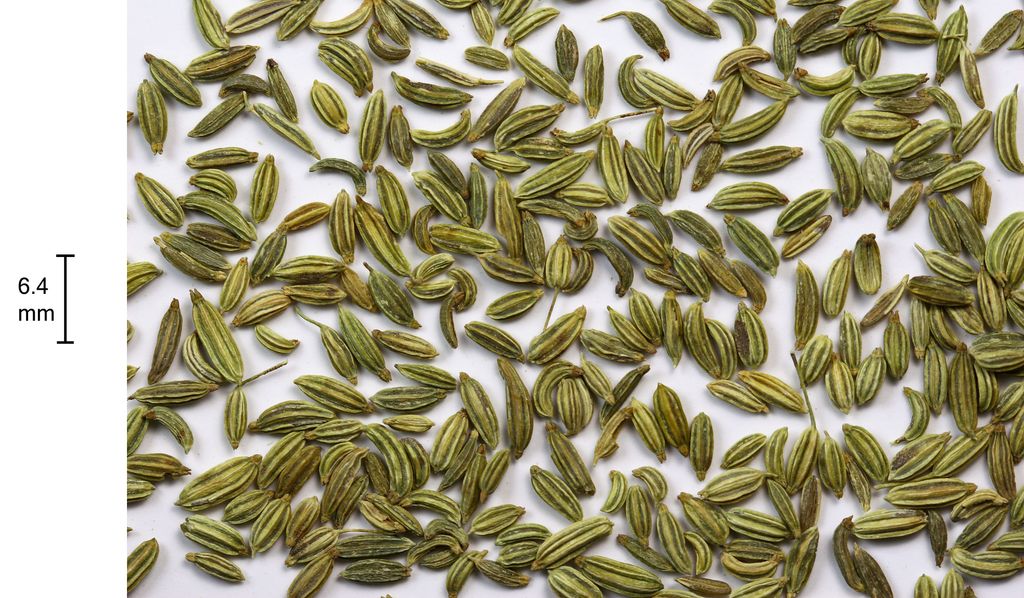
2. **Fennel**
Fennel, that distinctively licorice-flavored vegetable, is often misunderstood by home cooks but holds an incredible amount of culinary potential. It’s one of those rare plants where every part—the bulb, the stalks, and even the feathery fronds—is edible, and each offers its own unique contribution to a dish. Its elegant, layered bulb and delicate fronds make it a standout in any gourmet display.
For a fresh and crisp addition to your meals, start by slicing the fennel bulb thinly. These delicate slices are perfect for adding a refreshing crunch to salads or slaws, where its subtle anise flavor can truly shine without overpowering other ingredients. It provides a unique aromatic quality that elevates simple greens.
When roasted, fennel undergoes a magical transformation, taking on a wonderfully sweet and mellow flavor that softens its licorice notes into something much more approachable and nuanced. To achieve this, simply cut the bulb into wedges, toss them with olive oil, and bake until tender and lightly caramelized. Its natural sweetness is beautifully enhanced when paired with bright citrus fruits and fragrant herbs, creating a harmonious balance of flavors. Did you know fennel is a staple in Mediterranean cuisine? Its aromatic profile enhances a wide variety of dishes and ensures it stands out with grace, whether enjoyed raw or cooked. Its unique taste is sure to surprise and delight your palate, proving it’s far more than just a garnish.
Recipe details: Potato-Fennel Gratin
Prep time: 20 min Inactive time: 10 min
Cook time: 1 hr 45 min Total time: 2 hr 15 min
Level: Easy Servings: 10 servings
Total weight: 6186.3 g Calories: 7732.6 kcal
Energy: 7732.6 kcal Protein: 567.0 g
Carbs: 237.6 g Fat: 485.7 g
Dish Tags: french, main course, lunch/dinner, High-Fiber, Low-Carb, Dairy-Free, Gluten-Free, Wheat-Free, Egg-Free, Peanut-Free, Sulfites
Ingredients:
1/2 teaspoon freshly ground black pepper
2 small fennel bulbs
1 yellow onion, thinly sliced
2 tablespoons good olive oil
1 tablespoon unsalted butter
2 pounds russet potatoes (4 large potatoes)
2 cups plus 2 tablespoons heavy cream
2 1/2 cups grated Gruyère cheese (1/2 pound)
1 teaspoon kosher salt
Cooking steps:
1. Preheat the oven to 350 degrees F.
2. Butter the inside of a 10-by-15-by-2-inch (10-cup) baking dish.
3. Remove the stalks from the fennel and cut the bulbs in half lengthwise. Remove the cores and thinly slice the bulbs crosswise, making approximately 4 cups of sliced fennel. Saute the fennel and onions in the olive oil and butter on medium-low heat for 15 minutes, until tender.
4. Peel the potatoes, then thinly slice them by hand or with a mandoline. Mix the sliced potatoes in a large bowl with 2 cups of cream, 2 cups of Gruyère, salt, and pepper. Add the sauteed fennel and onion and mix well.
5. Pour the potatoes into the baking dish. Press down to smooth the potatoes. Combine the remaining 2 tablespoons of cream and 1/2 cup of Gruyère and sprinkle on the top. Bake for 1 1/2 hours, until the potatoes are very tender and the top is browned and bubbly. Allow to set for 10 minutes and serve.
Get the recipe: Potato-Fennel Gratin
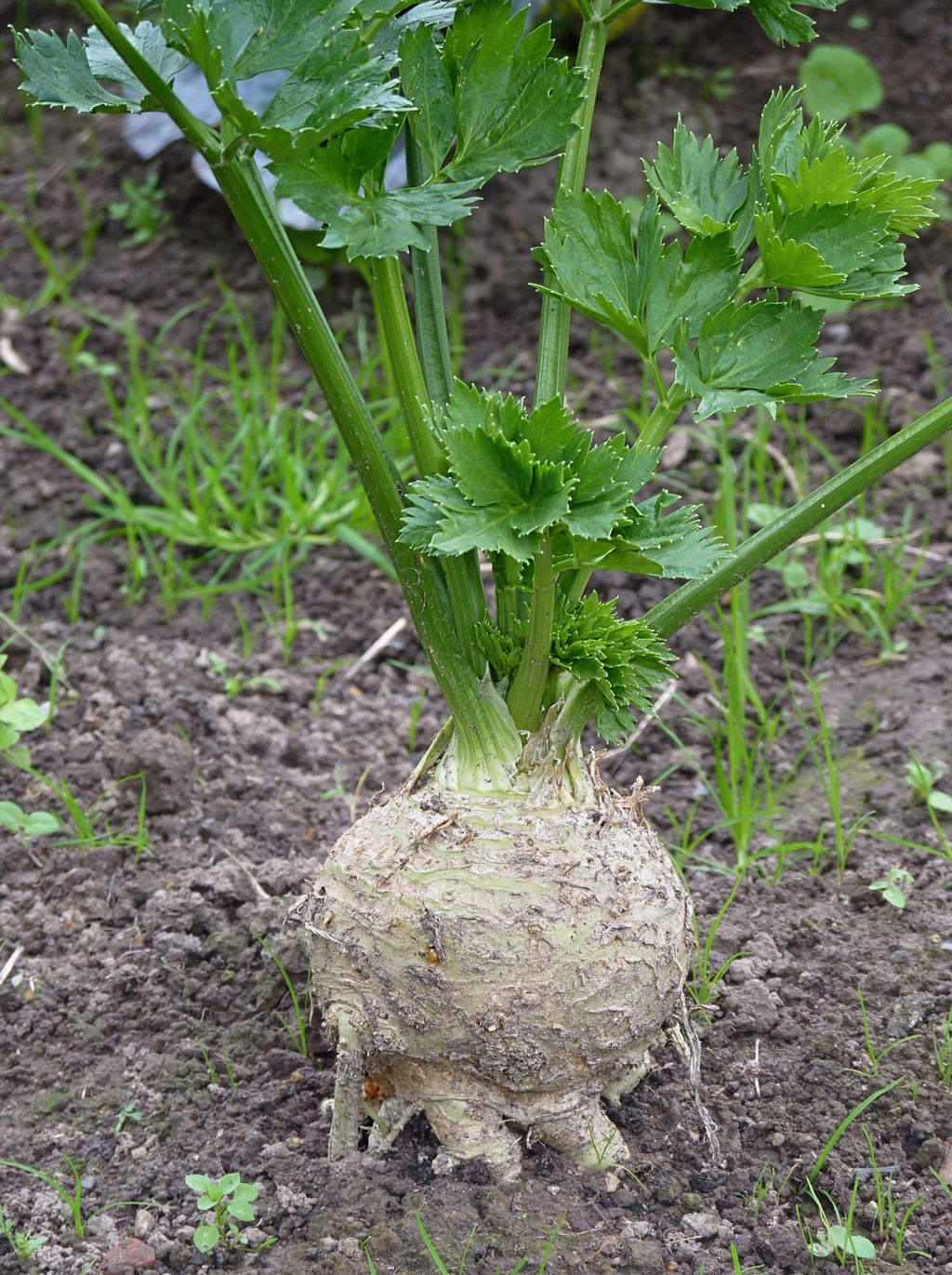
3. **Celeriac**
Celeriac, commonly known as celery root, might appear quite intimidating at first glance with its knobby, rugged exterior. However, don’t let its rustic appearance fool you; beneath that tough skin lies a true hidden gem in the vegetable world. This unassuming root vegetable boasts a creamy, flavorful flesh that remarkably reminiscent of celery, but with a wonderfully comforting nutty undertone that makes it uniquely appealing. It’s a testament to the fact that some of the best treasures are often found beneath rough exteriors.
To prepare this intriguing root, you’ll need to peel away its tough outer layer to reveal the pale, inviting flesh within. Once peeled, slicing the root into cubes is a common first step, opening up a world of culinary possibilities. Celeriac is absolutely delicious when mashed, offering a delightful alternative to potatoes with its distinct flavor and creamy texture. It also transforms beautifully when roasted, developing a sweet, caramelized exterior that enhances its earthy notes.
The earthy flavor of celeriac makes it an absolutely perfect base for hearty soups and comforting stews, adding a depth and richness that is hard to replicate with other vegetables. A quirky fact about celeriac: it has been cherished and enjoyed in European cuisine for centuries, gracing plates and enriching meals across the continent, yet it often goes unnoticed elsewhere. Don’t let its appearance deter you; celeriac is a wonderfully versatile and incredibly tasty addition to your kitchen, promising delightful discoveries with every bite.
Recipe details: Celeriac Puree
Prep time: 30 min Inactive time:
Cook time: 25 min Total time: 55 min
Level: Easy Servings: 4 servings
Total weight: 1122.6 g Calories: 898.9 kcal
Energy: 898.9 kcal Protein: 16.6 g
Carbs: 83.0 g Fat: 61.0 g
Dish Tags: french, starter, lunch/dinner, Sugar-Conscious, Vegetarian, Pescatarian, Gluten-Free, Wheat-Free, Sulfites
Ingredients:
3 heads celeriac, approximately 2 1/2 to 3 pounds
1 tablespoon olive oil
4 cloves garlic, peeled and sliced
1 teaspoon kosher salt
1/4 teaspoon freshly ground black pepper
5 cups water
2 tablespoons unsalted butter
1/4 cup heavy cream
Cooking steps:
1. Brush excess dirt off of the celeriac. Cut off the bottoms and tops, cut into quarters and peel. Rinse in cool water if there is any remaining dirt or debris. Cut into 1/2-inch thick dice.
2. Heat the olive oil in a 4-quart saucepan over low heat just until it shimmers. Add the celeriac, garlic, salt and pepper and cook, stirring frequently, just until it begins to soften, approximately 5 minutes. Increase the heat to medium-high and add the water. Bring to a boil and cook until the celeriac is tender and easily pierced with a fork, approximately 20 minutes. Drain the celeriac through a colander and return to the pot. Using a stick blender, puree until no lumps are present, approximately 1 minute. Place the butter and heavy cream into a microwave proof bowl and heat just until the butter is melted, approximately 45 seconds. Add the cream and butter and continue to puree with the stick blender for another minute. Serve warm.
Get the recipe: Celeriac Puree
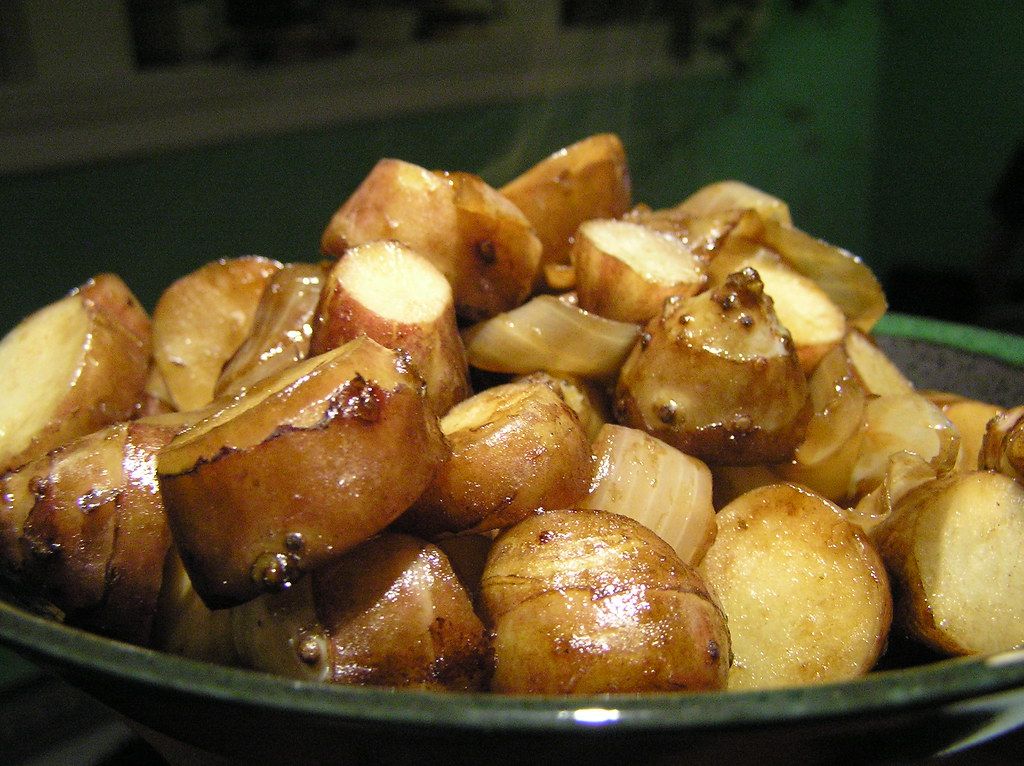
4. **Sunchokes**
Sunchokes, also widely recognized as Jerusalem artichokes, are fascinating knobby tubers that hold a delightfully nutty and sweet flavor. Despite their common name, which might lead you to believe they’re related to the globe artichoke, these intriguing root vegetables are actually kin to sunflowers! This surprising connection adds another layer of charm to their already unique profile. Sunchokes can be enjoyed in a variety of ways, both raw and cooked, making them a wonderfully versatile choice for any adventurous cook eager to experiment with new ingredients.
When roasted, sunchokes develop a rich, deeply caramelized taste that beautifully complements the earthy notes of garlic and the aromatic freshness of rosemary. To prepare them for roasting, simply scrub them clean to remove any soil, then slice them into thin coins before baking until tender and golden brown. The roasting process enhances their inherent sweetness, making them a fantastic side dish.
Alternatively, raw sunchokes offer a distinctively crunchy and refreshing bite, making them an excellent addition to salads or slaws. Their crisp texture and subtle sweetness can elevate a simple green salad into something truly special. Here’s a fun tidbit about these captivating tubers: sunchokes are native to North America and were cultivated by Native Americans long before European settlers ever arrived, making them a vegetable with deep historical roots. Discovering sunchokes in your kitchen might just feel like unearthing a piece of culinary history, bringing ancient flavors to your modern plate.
Recipe details: Sunchoke and Split Pea Soup
Prep time: 35 min Inactive time: 30 min
Cook time: 1 hr 18 min Total time: 2 hr 23 min
Level: Easy Servings: 6 servings
Total weight: 3963.0 g Calories: 4736.7 kcal
Energy: 4736.7 kcal Protein: 304.1 g
Carbs: 467.1 g Fat: 196.5 g
Dish Tags: american, soup, lunch/dinner, High-Fiber, Egg-Free, Peanut-Free, Tree-Nut-Free, Soy-Free, Fish-Free, Gluten, Wheat, Sulfites
Ingredients:
3 ounces pancetta, thinly sliced and diced (about 1/2 to 3/4 cup)
1/3 cup small diced leeks, white and light green parts only, (about 2)
1 pound sunchokes, peeled and diced
1/4 cup seeded and diced roasted pasilla pepper
1/2 cup peeled and small diced yellow onion (about 1/2 onion)
1 cup peeled and diced carrots, (about 2 large)
1 clove garlic, minced
1 tablespoon olive oil
1 pound smoked ham hocks
8 cups low-sodium chicken stock
1 pound dried split peas
Freshly ground black pepper
1/4 cup heavy cream, optional
1/4 cup apple cider vinegar
Goat Cheese Croutons, recipe follows
6 ounces goat cheese
2 tablespoons unsalted butter, room temperature
1/3 cup all-purpose flour
1/8 teaspoon salt
1/8 teaspoon cayenne pepper
1/2 cup panko bread crumbs
Cooking steps:
1. In a large Dutch oven over medium heat, saute the pancetta until just starting to brown. Remove from the pot, and drain on a paper towel lined plate. Increase the heat to medium-high and add the leeks, sunchokes, pasilla pepper, onion and carrots. Let cook for 5 to 6 minutes, then add in the garlic and cook for 2 to 3 minutes more. Make a well in the middle of the veggies, add the olive oil, and cook for 1 minute, then add the ham hocks. Cook the ham hocks, turning every 2 minutes, until all sides are warm and starting to lightly brown. Add the chicken stock and the peas. Bring to a simmer and cook for 30 to 45 minutes, stirring occasionally. Stir in freshly cracked pepper, to taste, and remove the ham hocks from the pot to a cutting board. Let them cool for a few minutes and with a fork, shred the meat and add to the soup. Stir in the heavy cream and the vinegar. Ladle the soup into serving bowls and serve with the goat cheese croutons. Sprinkle with rendered pancetta and a crack of black pepper and serve.
Get the recipe: Sunchoke and Split Pea Soup
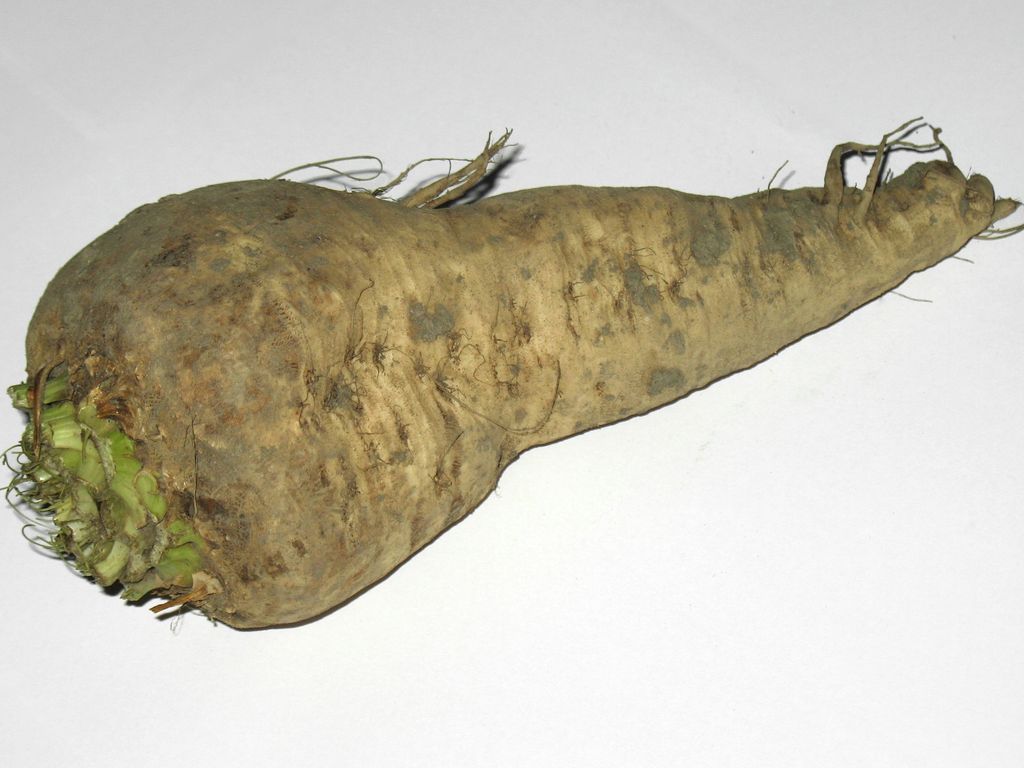
5. **Rutabaga**
Rutabaga, a hearty root vegetable, is often mistakenly identified as a turnip, but it truly deserves its own distinct spotlight in your kitchen. Its sweet, subtly earthy flavor is a delightful surprise, making it an ideal choice for anyone looking to shake up their usual vegetable routine and introduce some exciting new tastes. This humble vegetable packs a surprising punch of flavor that can transform everyday dishes.
To get to the heart of this versatile root, you’ll need to peel away its surprisingly thick skin, which then reveals a vibrant, appealing yellow interior. This bright color hints at the goodness packed within. Rutabagas are particularly excellent when roasted, as the heat helps to bring out and concentrate their natural sugars, creating a wonderfully sweet and tender result. Just chop them into manageable chunks, drizzle generously with olive oil, and roast until they achieve a beautiful caramelized finish.
Beyond roasting, this vegetable is also fantastic when mashed, offering a creamy and flavorful alternative to potatoes or other root vegetable purees. Its robust texture also makes it a wonderful addition to hearty soups, stews, and casseroles, where it can absorb flavors beautifully and add substance to the dish. A fun fact: rutabagas are actually a fascinating natural cross between cabbage and turnips, a botanical hybrid that has been cultivated since the 17th century. Their remarkable versatility and uniquely delicious taste make them an absolute must-try for any kitchen adventurer.
Recipe details: Mashed Rutabaga
Prep time: 15 min Inactive time:
Cook time: 55 min Total time: 1 hr 10 min
Level: Easy Servings: 6 to 8 servings
Total weight: 1715.2 g Calories: 1992.0 kcal
Energy: 1992.0 kcal Protein: 28.7 g
Carbs: 185.2 g Fat: 133.5 g
Dish Tags: italian, starter, lunch/dinner, Vegetarian, Pescatarian, Gluten-Free, Wheat-Free, Egg-Free
Ingredients:
1 large rutabaga, peeled and cut into 1-inch chunks
Kosher salt
3 Yukon gold potatoes, peeled and cut into 1-inch chunks
1 cup heavy cream
1/2 stick cold butter
Cooking steps:
1. Put the rutabaga in a large saucepan and cover by about 2 inches of water. Season the water generously with salt.
2. Partially cover the pot and bring the water to a boil over medium-high heat. Boil the rutabaga for 40 minutes; rutabagas take a long time to bring out their natural sweetness. Add the potatoes to the pot and cook until the potatoes are fork tender, about 15 minutes.
3. Heat the cream in a small saucepan over medium heat.
4. Drain the rutabagas and potatoes from the water and pass through a food mill. Add half the hot cream and cold butter into the milled rutabaga/potato mixture and stir vigorously to combine. Repeat this with the remaining cream and butter. Taste to make sure the seasoning is correct.
Get the recipe: Mashed Rutabaga
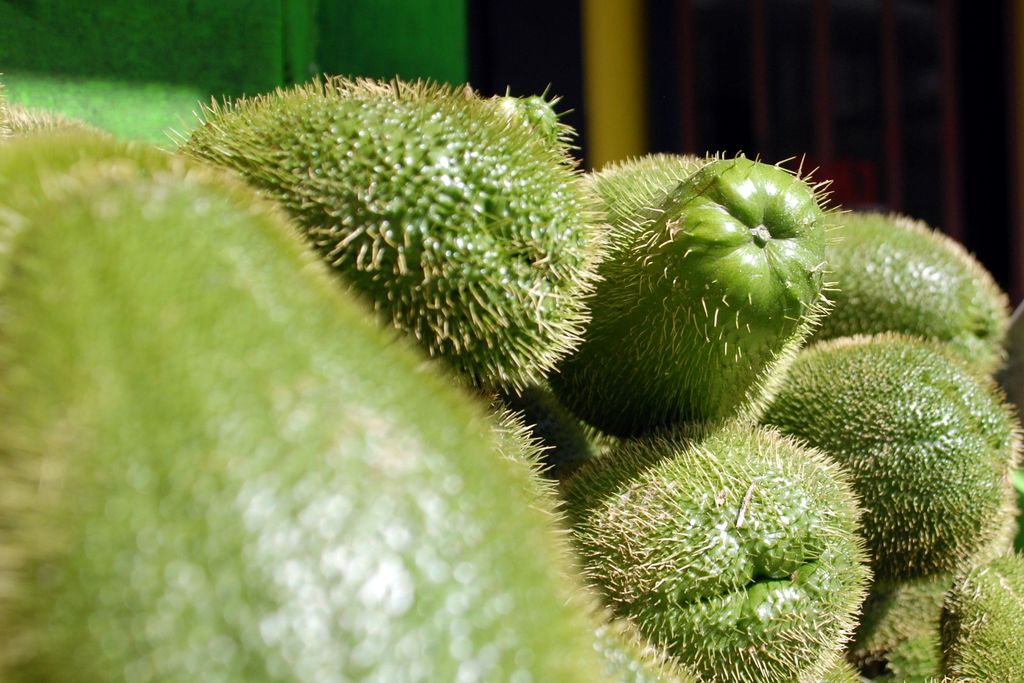
6. **Chayote**
Chayote, a distinctive squash originating from Central America, is a wonderfully crisp and mild vegetable that boasts endless culinary potential. Its appealing pear-like shape and delicate light green skin make it a standout in any produce section, inviting curiosity with its gentle yet intriguing appearance. This unassuming squash is a true chameleon in the kitchen, ready to adapt to a wide array of flavors and cooking styles.
For a fresh and crunchy addition to your meals, you can slice chayote thinly. These delicate slices are perfect for adding a refreshing texture to salads, where its subtle flavor can provide a light, almost cucumber-like base. It also performs beautifully in stir-fries, seamlessly blending with other ingredients and adding a satisfying crispness to the dish. Its subtle taste ensures it enhances rather than dominates, allowing other flavors to shine.
Chayote is equally delicious when steamed or sautéed, as it has a remarkable ability to absorb flavors from whatever it’s cooked with, making it an incredibly versatile ingredient. Its gentle flavor profile allows it to blend effortlessly into various dishes, from savory curries to light vegetable medleys. A quirky tidbit about chayote: it is a celebrated ingredient in Latin American cuisine, where it’s affectionately known by various names such as “mirliton” or “vegetable pear.” Its adaptability and wonderfully gentle flavor make it an exciting ingredient to experiment with in the kitchen, promising delightful and unexpected culinary outcomes.
Recipe details: Chayotes Relleno
Prep time: 40 min Inactive time:
Cook time: 1 hr Total time: 1 hr 40 min
Level: Easy Servings: 8 servings
Total weight: 420.2 g Calories: 177.9 kcal
Energy: 177.9 kcal Protein: 14.2 g
Carbs: 17.9 g Fat: 6.7 g
Dish Tags: mexican, main course, lunch/dinner, High-Fiber, Vegetarian, Pescatarian, Mediterranean, Gluten-Free, Wheat-Free, Sulfites
Ingredients:
4 chayote squash, halved, seeded
2 tablespoons vegetable oil
1 onion, finely chopped
11/2 teaspoons salt
1/2 pound chopped mushrooms
2 garlic cloves, minced
2 jalapeno chilies, minced
1/2 teaspoon ground cumin
2 tomatoes, peeled, seeded chopped
1 to 2 tablespoons chopped epazote leaves or fresh oregano
1 cup dry bread crumbs
1/2 cup toasted almonds, chopped
1/2 cup grated Cotija or Parmesan cheese
Cooking steps:
1. Preheat oven to 350 degrees F. Cook unpeeled squash in lightly salted water until crisp tender, about 15 minutes. Drain well. Scoop out most of flesh, leaving 1/4-inch thick shell. Season shell with salt and pepper. Coarsely chop chayote flesh. Set aside.
2. Heat oil in heavy large skillet over medium high heat. Add onion and salt and saute until tender, about 5 minutes. Add mushrooms and cook until most of liquid evaporates. Add garlic, jalapeno and cumin and saute until fragrant. Add tomatoes and reserved chayote flesh. Stir until most of liquid evaporates. Stir in epazote, bread crumbs and almonds. Season to taste with salt and pepper. Spoon mixture into shells. Sprinkle with cheese. Arrange shells in large baking pan. Pour enough hot water around shells to reach 1/4-inch. Bake until heated through, about 15 minutes.
Get the recipe: Chayotes Relleno

7. **Romanesco**
Romanesco, truly a mesmerizing vegetable, looks less like produce and more like a piece of abstract art, making it as delightful to behold as it is to eat. Its truly unique fractal patterns, which follow a fascinating mathematical sequence known as the Fibonacci sequence, and its striking chartreuse green hue make it an absolute showstopper on any plate or in any garden. It’s an edible wonder that combines both beauty and deliciousness.
Despite its alien-chic appearance, Romanesco is actually a close relative of both cauliflower and broccoli, offering a familiar yet distinct flavor profile. Its taste is notably milder and nuttier than its more common cousins, with a delicate sweetness that truly shines when prepared correctly. This makes it a fantastic option for those who find the stronger flavors of broccoli or cauliflower a bit overpowering.
To best preserve its delicate texture and intricate structure, Romanesco is ideally prepared by breaking it into individual florets and then steaming or roasting them lightly. This gentle cooking ensures the florets remain tender-crisp and flavorful. Romanesco pairs exceptionally well with simple yet impactful ingredients like savory garlic, bright lemon, or a dusting of rich Parmesan cheese, which all highlight its subtle complexities. Its stunning appearance combined with its nuanced flavor makes it a truly special and memorable addition to any dish, proving that food can indeed be a work of art.
Beyond the Usual: 7 More Powerhouse Veggies You’re Missing Out On (and How to Make Them Shine!)
We’ve already embarked on a delicious journey, unearthing some of the most fascinating and often-overlooked vegetables that deserve a prime spot on your plate. But trust us, the adventure isn’t over yet! There are even more culinary powerhouses out there, quietly waiting for their moment in the spotlight, ready to deliver a serious boost of flavor, nutrition, and excitement to your meals. Get ready to meet the next wave of underappreciated gems that will completely transform your perception of vegetables and add a vibrant new dimension to your cooking.
From leafy greens with a subtle bitter edge to crunchy roots that defy expectations, these veggies offer a spectrum of tastes and textures that will challenge your palate in the best possible way. We’re about to dive deep into their incredible nutritional benefits, explore their diverse culinary applications, and arm you with practical tips to seamlessly incorporate these overlooked treasures into your daily routine. Prepare to discover your new favorite ingredients and truly make your plate shine!
Recipe details: Spicy-Sour Romanesco
Level: Unknown Servings: 4
Total weight: 526.2 g Calories: 250.6 kcal
Energy: 250.6 kcal Protein: 18.4 g
Carbs: 14.8 g Fat: 11.7 g
Dish Tags: japanese, main course, lunch/dinner, Sugar-Conscious, Low Potassium, Kidney-Friendly, Keto-Friendly, Vegan, Sulfites
Ingredients:
1 pound young romanesco, washed and shaken dry
1 small garlic clove, peeled and thinly sliced
extra virgin olive oil
kosher salt or sea salt
3-5 tablespoons best-quality sherry vinegar
1/4-1/2 teaspoon dried chile flakes
Cooking steps:
1. Wash the romanesco thoroughly and shake dry, then trim the florets from the core, breaking them into bite-sized pieces.
2. Bring a large pot of salted water to a rolling boil.
3. Carefully add the romanesco florets to the boiling water and blanch for 2-3 minutes until tender-crisp and bright green; do not overcook.
4. Immediately drain the romanesco in a colander, shaking off excess water.
5. In a medium bowl, combine the thinly sliced garlic clove, a generous drizzle of extra virgin olive oil, and a pinch of kosher or sea salt.
6. Add the drained romanesco florets to the bowl with the garlic and oil mixture.
7. Pour 3 to 5 tablespoons of best-quality sherry vinegar over the romanesco.
8. Sprinkle with 1/4 to 1/2 teaspoon of dried chile flakes, adjusting to your preferred level of heat.
9. Toss all ingredients gently until the romanesco is evenly coated with the dressing.
10. Taste and adjust seasoning if needed, adding more salt, vinegar, or chile flakes, then serve immediately or at room temperature.
Get the recipe: Spicy-Sour Romanesco
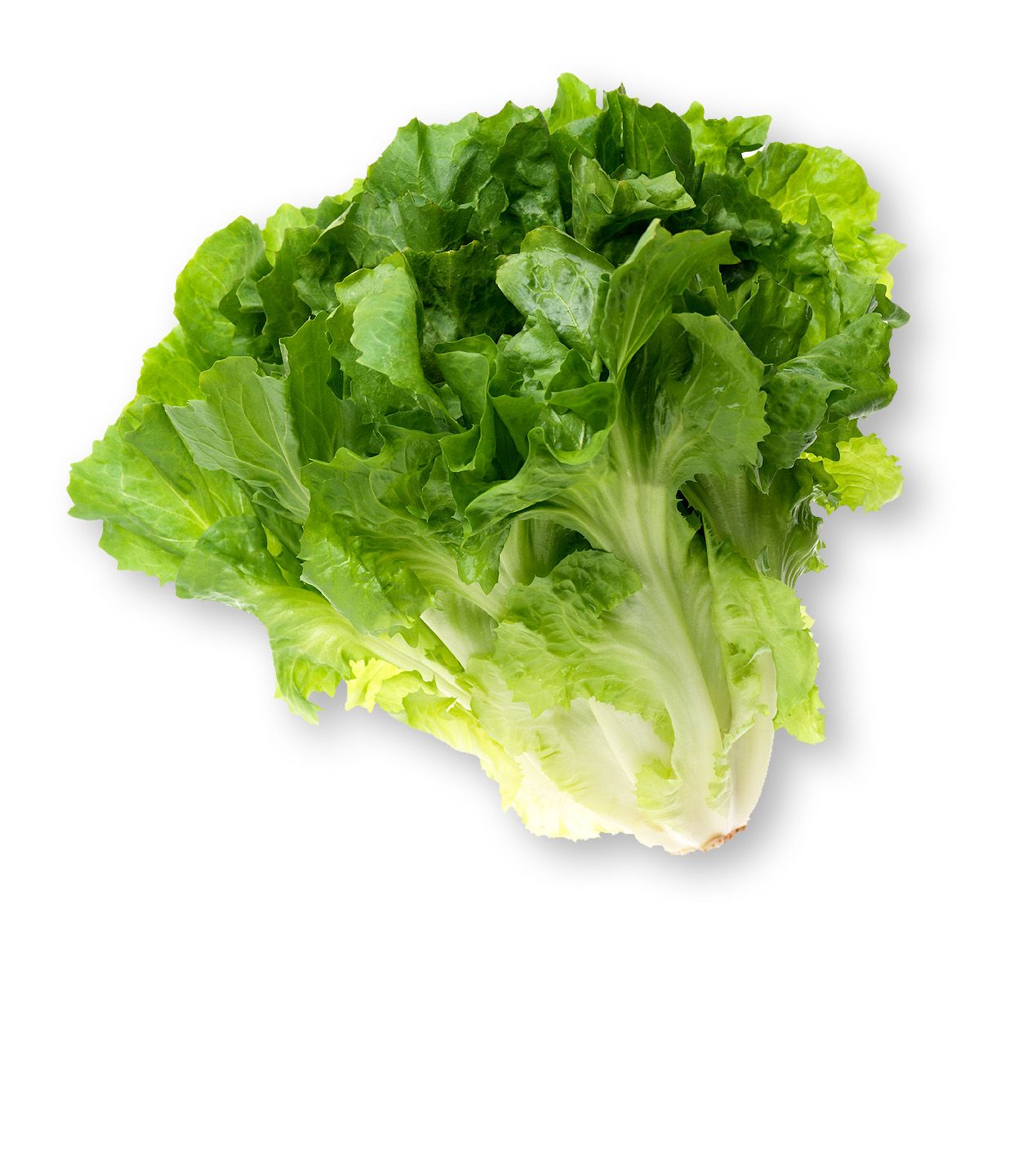
8. **Escarole**
Escarole, with its broad, curly leaves and a distinct, slightly bitter edge, is a leafy green that truly packs a punch when it comes to both flavor and nutrition. Often found gracing salads or adding depth to hearty soups, this understated powerhouse is a versatile addition to your culinary repertoire, waiting to be fully appreciated for its robust character. Its beautiful texture and subtle complexity make it far more than just another green on the side.
For a simple yet incredibly satisfying preparation, you can gently sauté escarole with a bit of garlic and a generous drizzle of olive oil until its leaves become wonderfully wilted. This method softens its inherent bitterness, transforming it into a lovely accompaniment that expertly balances the richness of other dishes. It’s a fantastic way to introduce a sophisticated, nuanced flavor to your meal without overpowering the main event.
Did you know that escarole is a proud member of the chicory family, sharing its lineage with endive and radicchio? This heritage contributes to its unique flavor profile. It’s also a beloved staple in classic Italian wedding soup, where its robust taste and impressive nutritional benefits shine through, proving it’s an understated yet absolutely essential component in your green game. Embrace its unique charm, and it might just become your new go-to green!
Recipe details: Escarole and Bean Soup
Prep time: 12 min Inactive time:
Cook time: 10 min Total time: 22 min
Level: Easy Servings: 6 servings
Total weight: 2003.2 g Calories: 1858.5 kcal
Energy: 1858.5 kcal Protein: 92.9 g
Carbs: 239.6 g Fat: 65.9 g
Dish Tags: mediterranean, soup, lunch/dinner, Balanced, High-Fiber, DASH, Dairy-Free, Egg-Free, Peanut-Free, Tree-Nut-Free, Gluten, Wheat, Sulfites
Ingredients:
2 tablespoons olive oil
2 garlic cloves, chopped
1 pound escarole, chopped
Salt
4 cups low-salt chicken broth
1 (15-ounce) can cannellini beans, drained and rinsed
1 (1-ounce) piece Parmesan
Freshly ground black pepper
6 teaspoons extra-virgin olive oil
Serving suggestion: crusty bread
Cooking steps:
1. Heat 2 tablespoons of olive oil in a heavy large pot over medium heat. Add the garlic and saute until fragrant, about 15 seconds. Add the escarole and saute until wilted, about 2 minutes. Add a pinch of salt. Add the chicken broth, beans, and Parmesan cheese. Cover and simmer until the beans are heated through, about 5 minutes. Season with salt and pepper, to taste.
2. Ladle the soup into 6 bowls. Drizzle 1 teaspoon extra-virgin olive oil over each. Serve with crusty bread.
Get the recipe: Escarole and Bean Soup
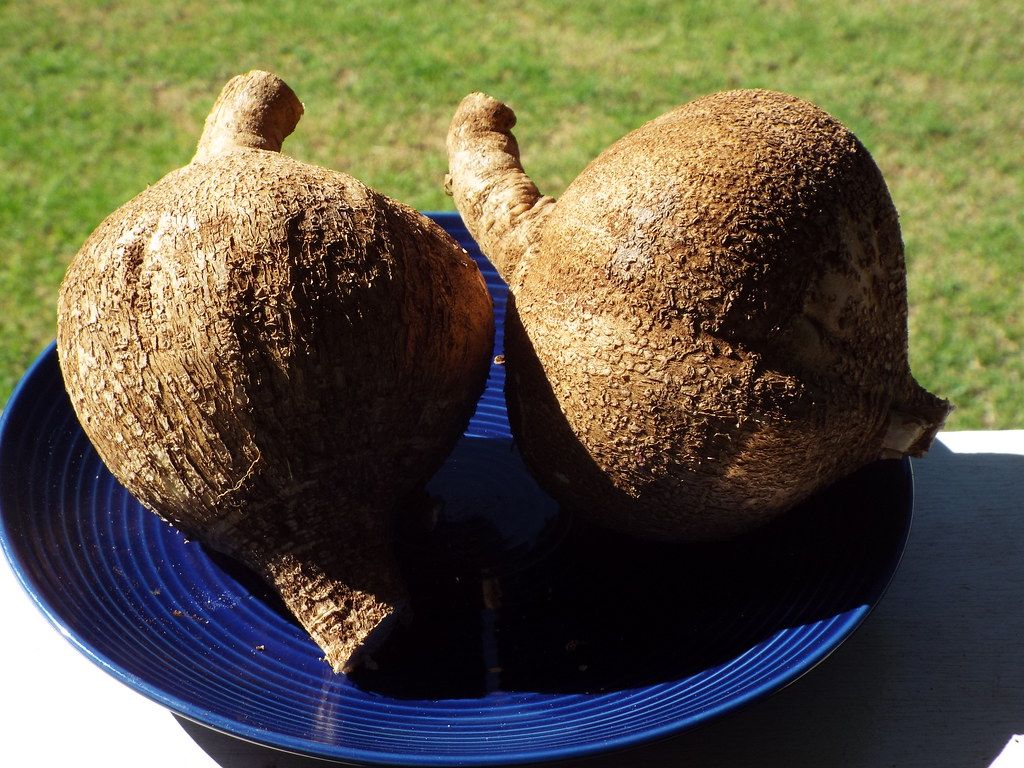
9. **Jicama**
Prepare for a truly refreshing surprise with jicama, the wonderfully crunchy Mexican root vegetable that’s a pure delight for your taste buds. This hidden gem boasts an incredibly crisp texture, reminiscent of a cross between an apple and a potato, combined with a subtly sweet flavor that makes it an instant favorite for light snacks and vibrant salads. Its refreshing qualities are particularly welcome on a warm day.
To unlock the magic of jicama, you’ll first need to peel away its relatively tough outer skin, revealing a pristine, juicy white flesh within. Once peeled, simply slice it into sticks, and you have the perfect base for a zesty, invigorating treat. Try serving these crisp sticks with a squeeze of fresh lime juice and a sprinkle of chili powder for a vibrant and surprisingly addictive snack that’s bursting with flavor.
Beyond its delightful taste, jicama is celebrated for its cool, hydrating properties, making it an ideal choice for hot days or as a refreshing component in various dishes. Interestingly, this versatile root vegetable has been a culinary staple cultivated in Mexico since ancient times, deeply woven into the fabric of many traditional dishes. Its versatility and invigorating taste ensure it’s a fantastic and unexpected addition to your snack rotation and a delightful discovery for any adventurous eater.
Recipe details: Jicama Salad
Cook time: 20 min Total time: 20 min
Level: Easy Servings: 4 servings
Total weight: 1024.0 g Calories: 1586.2 kcal
Energy: 1586.2 kcal Protein: 12.5 g
Carbs: 87.7 g Fat: 140.8 g
Dish Tags: american, salad, lunch/dinner, Low-Carb, Vegan, Vegetarian, Pescatarian, Mediterranean, DASH, Sulfites
Ingredients:
1/4 cup sherry vinegar
2 teaspoons honey
Kosher salt and freshly ground black pepper
1/2 cup olive oil
1 small jicama, peeled and julienned
4 navel oranges, segmented
1/4 cup roughly chopped cilantro
1 jalapeño, seeded and minced
4 ripe avocados, halved, pitted, skinned and sliced
Juice of 1 lime
Flaky sea salt, for sprinkling
Cooking steps:
1. In a mixing bowl, whisk together the sherry vinegar and honey. Season with the kosher salt and black pepper then stream in the olive oil while whisking constantly. To the vinaigrette, fold in the jicama, orange segments, cilantro and jalapeño. Shingle the avocado slices on the bottom of a platter. Drizzle with the lime juice and sprinkle with the flaky sea salt. Spoon the jicama salad over the avocado, along with the vinaigrette. Serve.
Get the recipe: Jicama Salad
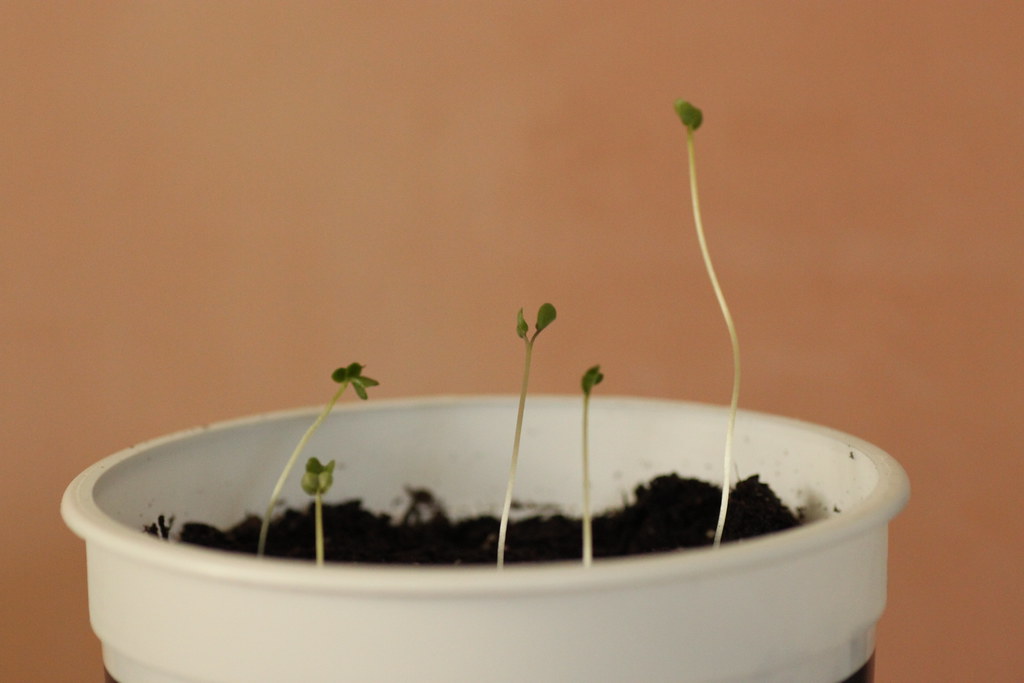
10. **Kale Sprouts**
Imagine combining the best attributes of two beloved greens: kale’s nutritional prowess and Brussels sprouts’ charming, compact form. That’s precisely what you get with kale sprouts, a delightful and relatively new hybrid that truly offers the best of both worlds. These tender, miniature gems are not only packed with an impressive array of nutrients but also deliver a wonderfully subtle flavor that makes them a joy to cook and eat.
Thanks to their small size and tender leaves, kale sprouts are incredibly versatile and perfect for quick cooking methods that preserve their delicate texture and nutrients. You can easily sauté them with a touch of garlic and a good quality olive oil for a simple yet elegant side dish that comes together in minutes. Alternatively, roasting them until they’re just tender and lightly crispy can create a delightful crunch that’s perfect for adding texture to any meal.
It’s fascinating to consider that kale sprouts are a relatively recent addition to the vegetable scene, having only been introduced to the wider market a few years ago. Despite their short history, their mild, nutty flavor and uniquely tender yet firm texture have quickly made them a standout ingredient in modern kitchens. If you’re looking for a fresh, exciting green that’s easy to prepare and incredibly nutritious, kale sprouts are definitely worth a try!
Recipe details: Kale and Brussels Sprout Salad
Cook time: 10 min Total time: 20 min
Level: Easy Servings: 8 servings
Total weight: 1237.2 g Calories: 2114.7 kcal
Energy: 2114.7 kcal Protein: 80.0 g
Carbs: 77.9 g Fat: 177.5 g
Dish Tags: south american, salad, lunch/dinner, Low-Carb, Sugar-Conscious, Keto-Friendly, Vegetarian, Pescatarian, Mediterranean, Sulfites
Ingredients:
3 cups Brussels sprouts
1 large bunch Tuscan kale, center stems discarded
1 small clove garlic
1 small shallot
1 cup finely grated pecorino
1/2 cup extra-virgin olive oil
1/2 cup toasted pine nuts
2 tablespoons Dijon mustard
3 lemons, zested and juiced
Salt and freshly ground black pepper
Salt and freshly ground black pepper
Cooking steps:
1. In a food processor fitted with a slicing blade, shred the Brussels sprouts. Next, shred the kale. Add the garlic and shallot and shred. (Alternatively, shred and mince the vegetables with a knife.) Set aside.
2. In a large bowl, whisk together the pecorino, olive oil, pine nuts, mustard, lemon zest and juice and salt and pepper to taste. Add in the shredded vegetables and toss well to combine. Let the salad sit for 10 minutes before serving to allow the dressing to permeate the greens.
Get the recipe: Kale and Brussels Sprout Salad
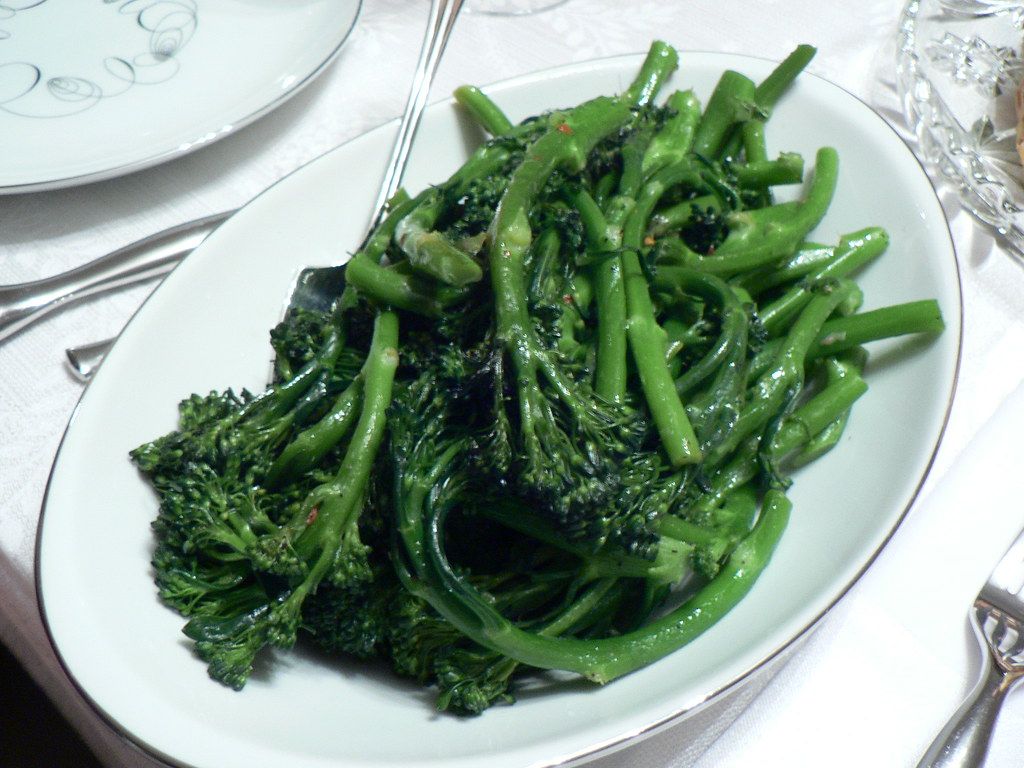
11. **Broccoli Rabe**
Broccoli rabe, also widely known as rapini, is a leafy green that boasts a truly bold and wonderfully distinct, slightly bitter flavor, setting it apart from its milder brassica cousins. Its tender leaves and small, unopened buds offer a delicious and complex addition to an impressive array of dishes, from rustic pasta preparations to savory meat accompaniments. This is a vegetable that asserts its presence with grace.
To prepare this flavorful green, a popular method involves sautéing broccoli rabe with aromatic garlic and a pinch of fiery chili flakes for an easy yet incredibly flavorful side dish. Its robust taste stands up beautifully to, and perfectly complements, heartier ingredients like pasta and various meats. For those who prefer a slightly mellower flavor, blanching it briefly before sautéing can help soften its inherent bitterness, creating a more approachable profile.
This distinct vegetable holds a celebrated place in both Italian and Chinese cuisines, where it is highly prized for its unique, assertive flavor and incredible versatility. Packed with essential nutrients like iron, calcium, zinc, and vitamins A, C, and K, along with potentially cancer-fighting glucosinolates, as noted by registered dietitian Julia Zumpano, broccoli rabe is truly a must-try for any adventurous cook. Its ability to elevate simple ingredients into memorable meals is unparalleled.
Recipe details: Sausage, Beans and Broccoli Rabe Soup
Prep time: 10 min Inactive time:
Cook time: 20 min Total time: 30 min
Level: Easy Servings: 4 servings
Total weight: 3183.0 g Calories: 3229.6 kcal
Energy: 3229.6 kcal Protein: 177.7 g
Carbs: 195.0 g Fat: 189.9 g
Dish Tags: central europe, soup, lunch/dinner, Dairy-Free, Gluten-Free, Wheat-Free, Egg-Free, Peanut-Free, Sulfites
Ingredients:
2 tablespoons extra-virgin olive oil, 2 turns of the pan
1 1/4 pounds Italian bulk sweet sausage
1 medium onion, chopped
1 carrot, chopped
1 large potato, peeled and chopped into small dice
2 cloves garlic, chopped
1 bay leaf
2 cans white beans, drained
Salt and pepper
4 cups chopped broccoli rabe and greens
2 quarts chicken stock
Grated Parmigiano-Reggiano or Romano, to pass at table
Cooking steps:
1. Heat medium soup pot over medium-high heat. Add the olive oil and sausage and brown. Add veggies, bay leaf and beans. Season with salt and pepper. Cook mixture 5 minutes to begin to soften the vegetables. Add rabe and wilt. Add stock and cover pot. Raise heat and bring soup to a boil. Reduce heat to simmer and cook 15 minutes. Adjust seasonings and serve soup with grated cheese, for topping.
Get the recipe: Sausage, Beans and Broccoli Rabe Soup
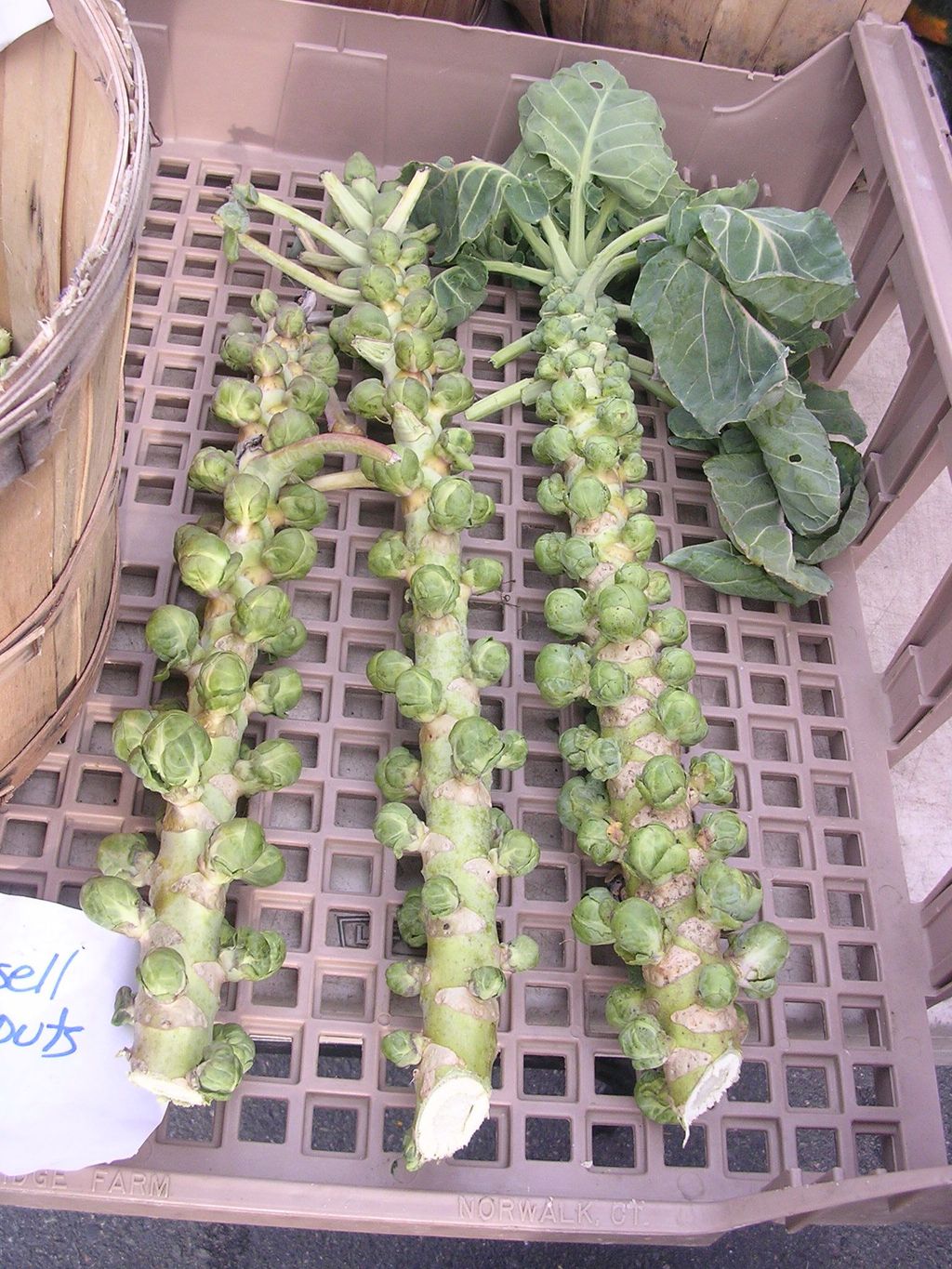
12. **Brussels Sprouts**
Often a polarizing vegetable, properly prepared Brussels sprouts are a truly tremendous addition to your veggie options, defying their notorious reputation from childhood dinner tables. These humble, compact members of the cabbage family, also known as cruciferous vegetables, are veritable nutritional powerhouses waiting to be rediscovered. When cooked just right, they offer a delightful tenderness and a subtly sweet, earthy flavor that can surprise even the staunchest skeptics.
Beyond their improved taste when cooked correctly, Brussels sprouts are an excellent source of essential vitamins C and K, and they provide a substantial amount of dietary fiber, contributing significantly to your overall well-being. Researchers have also highlighted their potential role in disease prevention, particularly noting the presence of sulforaphane, a compound that may play a major role in preventing certain cancers, including prostate and colon cancer. This makes them far more than just a side dish; they’re a health-boosting superstar.
The key to unlocking their delicious potential and avoiding any off-putting smells, which can arise from hydrogen sulfide gases if overcooked, lies in their preparation. For optimum nutrition and flavor, registered dietitian Julia Zumpano suggests quartering them and steaming them for less than five minutes. Finishing them off with a hint of garlic or a squeeze of fresh lemon juice elevates their natural taste, transforming them into a savory and satisfying component of any meal.
Recipe details: Roasted Brussels Sprouts
Prep time: 10 min Inactive time:
Cook time: 40 min Total time: 50 min
Level: Easy Servings: 6 servings
Total weight: 727.5 g Calories: 661.2 kcal
Energy: 661.2 kcal Protein: 23.2 g
Carbs: 62.3 g Fat: 43.2 g
Dish Tags: american, starter, lunch/dinner, Sugar-Conscious, Keto-Friendly, Vegan, Vegetarian, Pescatarian
Ingredients:
1 1/2 pounds Brussels sprouts
3 tablespoons good olive oil
3/4 teaspoon kosher salt
1/2 teaspoon freshly ground black pepper
Cooking steps:
1. Preheat oven to 400 degrees F.
2. Cut off the brown ends of the Brussels sprouts and pull off any yellow outer leaves. Mix them in a bowl with the olive oil, salt and pepper. Pour them on a sheet pan and roast for 35 to 40 minutes, until crisp on the outside and tender on the inside. Shake the pan from time to time to brown the sprouts evenly. Sprinkle with more kosher salt ( I like these salty like French fries), and serve immediately.
Get the recipe: Roasted Brussels Sprouts
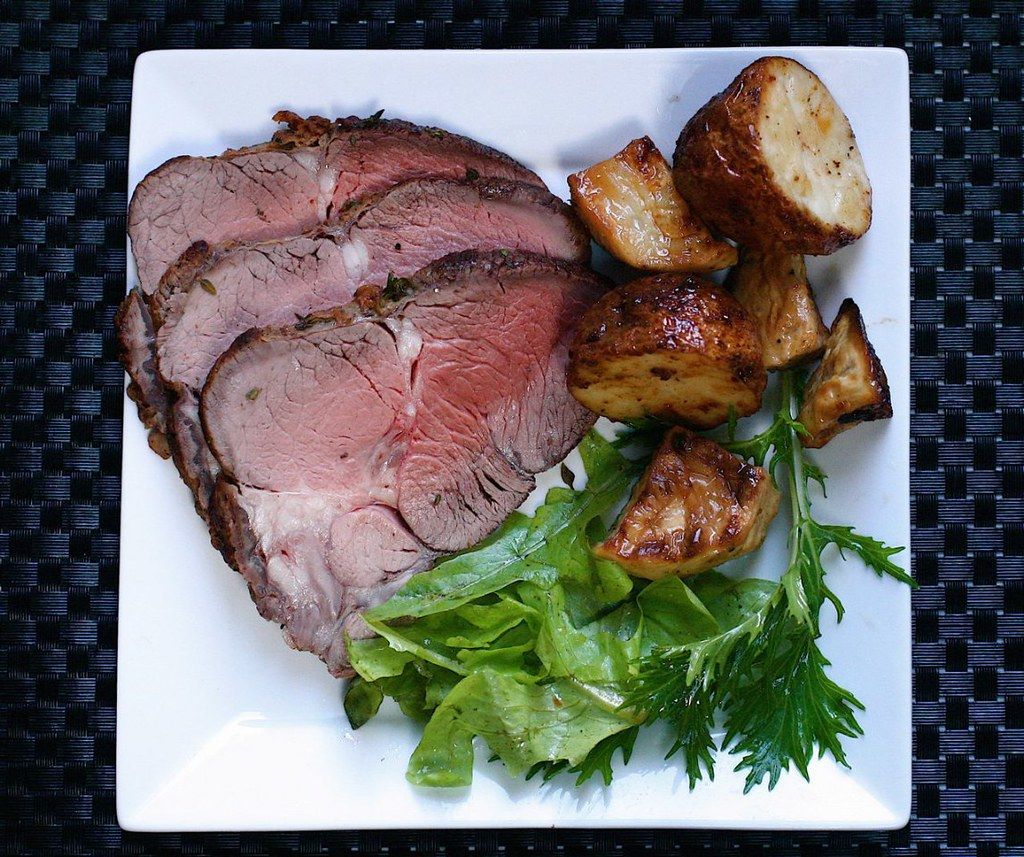
13. **Watercress**
Watercress, a petite yet mighty cruciferous vegetable, may not be on everyone’s radar, but it certainly packs a serious punch of flavor and an astonishing array of health benefits. This delicate, white, and crunchy green boasts a distinct yet mild peppery flavor that makes it incredibly versatile. It’s a true unsung hero of the produce aisle, ready to elevate your dishes with its vibrant taste and impressive nutritional profile.
Study after study continues to document the truly amazing benefits of watercress, solidifying its status as a nutritional powerhouse. Researchers are actively exploring its potential in critical areas such as reducing smoking carcinogens, turning off breast cancer signals, and even alleviating physical stress experienced from intense workouts. Its exceptional nutrient density was officially recognized in 2014 when it was named the top powerhouse veggie in terms of antioxidants, a testament to its protective capabilities.
According to registered dietitian Julia Zumpano, watercress is an incredibly easy, toss-into-anything kind of vegetable that seamlessly integrates into a variety of meals. You can effortlessly add it to fresh salads for a peppery bite, incorporate it into a quick stir-fry for an added layer of flavor, or pair it beautifully in Asian cuisine. It also makes for an elegant garnish or a flavorful bed for a beautifully cooked piece of wild fish, proving its versatility extends far beyond just a simple garnish.
Recipe details: Watermelon With Watercress and Feta
Prep time: 10 min Inactive time:
Cook time: Total time: 10 min
Level: Easy Servings: 4 servings
Total weight: 723.5 g Calories: 1479.9 kcal
Energy: 1479.9 kcal Protein: 63.7 g
Carbs: 75.0 g Fat: 103.2 g
Dish Tags: mediterranean, greek, salad, lunch/dinner, Low-Carb, Egg-Free, Peanut-Free, Soy-Free, Fish-Free, Shellfish-Free, Sulfites
Ingredients:
1 (2 pound) piece watermelon, rind removed and flesh cut into 1/2-inch cubes
1 (4-ounce) block feta cheese, cut into 1/2-inch cubes
1 packed cup watercress or arugula
1 lemon, zested and juiced
2 tablespoons extra-virgin olive oil
1/2 teaspoon salt
1/4 teaspoon freshly ground black pepper
Cooking steps:
1. In a salad bowl, combine the watermelon, feta cheese, watercress, lemon zest, lemon juice, olive oil, salt, and pepper. Gently toss until all the ingredients are combined. Serve immediately.
Get the recipe: Watermelon With Watercress and Feta
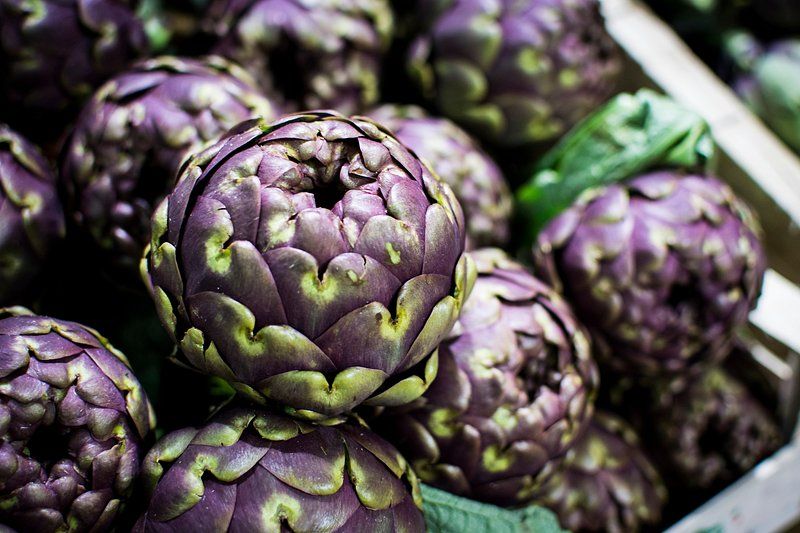
14. **Artichokes**
Artichokes are truly a marvel of the vegetable world, offering remarkable versatility and a unique, nutty flavor that makes them an adventurous and rewarding culinary experience. What’s even better is that every part of this fascinating veggie, from the tender hearts to the succulent ends of the leaves, is edible, offering different textures and tastes for you to explore. They’re a testament to nature’s intricate designs and culinary generosity.
These intriguing vegetables are exceptionally rich in a wide range of antioxidants, actively protecting your cells from damage. Furthermore, they serve as an excellent source of essential nutrients like folate, potassium, and numerous other vital vitamins and minerals, contributing significantly to your overall health. Registered dietitian Julia Zumpano highlights their low-calorie count, noting that just one cup of cooked artichoke hearts contains only about 45 calories, alongside a healthy five grams of fiber, making them a fantastic dietary choice.
For a delightful and surprisingly simple preparation, try steaming whole artichokes until they are fork-tender, then enjoy scraping the tender ends of the leaves with your teeth, dipping them into your favorite accompaniment like olive oil, hummus, or a creamy Greek yogurt dip. For quicker meals, defrosting frozen artichoke hearts allows you to easily add them to green salads, tuna salads, or even pasta salads, bringing their unique flavor and nutritional boost to a variety of everyday dishes. Don’t let their thorny exterior fool you; artichokes are a true treasure waiting to be savored.
So, there you have it: more incredible, underrated vegetables just waiting to be explored! We hope this journey has inspired you to step outside your comfort zone and embrace the vast, flavorful world of produce that often goes unnoticed. From the slightly bitter elegance of escarole to the crisp hydration of jicama, and the rich nutrients packed into Brussels sprouts and artichokes, these hidden gems offer an endless array of possibilities for boosting your health and adding undeniable excitement to your plate.
Recipe details: Artichoke Gratinata
Prep time: 10 min Inactive time:
Cook time: 15 min Total time: 25 min
Level: Easy Servings: 4 servings
Total weight: 798.8 g Calories: 1260.8 kcal
Energy: 1260.8 kcal Protein: 41.4 g
Carbs: 63.9 g Fat: 95.8 g
Dish Tags: mediterranean, main course, lunch/dinner, High-Fiber, Low-Carb, Sugar-Conscious, Vegetarian, Pescatarian, Egg-Free, Peanut-Free, Gluten, Wheat, Sulfites
Ingredients:
3 tablespoons olive oil
1 garlic clove, minced
1 pound frozen artichoke hearts, thawed
2 tablespoons chopped fresh parsley leaves
3/4 teaspoon salt
1/4 teaspoon freshly ground black pepper
1/8 teaspoon red pepper flakes
1/2 cup chicken broth
1/4 cup Marsala wine
2 tablespoons butter
1/3 cup plain bread crumbs
1/3 cup grated Parmesan
Cooking steps:
1. Preheat the oven to 450 degrees F.
2. Warm the olive oil in a heavy bottom skillet over medium-high heat. Add the garlic and cook for 1 minute. Add the artichoke hearts, parsley, salt, pepper, and red pepper flakes and cook until the artichoke hearts are starting to brown at the edges, about 3 minutes. Add the chicken broth and wine and simmer for 3 minutes. Transfer the artichoke mixture to a 2-quart baking dish.
3. Melt the butter in the same skillet used to cook the artichokes. In a small bowl mix the melted butter with the bread crumbs. Stir in the Parmesan and top the artichokes with the bread crumbs. Bake until the top is golden, about 10 minutes.
Get the recipe: Artichoke Gratinata
Don’t be shy about experimenting with these new tastes and textures. Whether you’re roasting, sautéing, or enjoying them raw, each of these vegetables brings its own unique character to the table. By incorporating more of these overlooked heroes into your diet, you’re not just enhancing your meals; you’re expanding your culinary horizons and discovering a world of deliciousness you never knew existed. Happy cooking, and may your veggie game forever be strong!”



